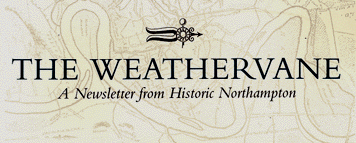

|


Weathervane Newsletter (date)

Book Review: Alice Sings the Blues
Helen Lefkowitz Horowitz and Kathy Peiss, eds. Love Across the Color Line: The Letters of Alice Hanley to Channing Lewis. Amherst: University of Massachusetts Press, 1996. Pp. xii, 144. Paper $12.95.
In 1992, a black silk stocking containing a packet of old letters fell from the ceiling of a Bright Avenue house undergoing renovation. The spare, penciled prose and the stilted handwriting hinted at a mysterious passion, long lost. Thus began a chain of events that eventually led journalists, historians and researchers to libraries, newspaper morgues, graveyards and unfamiliar neighborhoods in search of the identities of the correspondents.
Love Across the Color Line is partly about the process of historical discovery. Gazette reporter Phoebe Mitchell describes her search for Alice Hanley, the Irish-Catholic coachman's daughter and author of the letters, and the moment she discovered that Channing Lewis, the man to whom they were addressed, was an African-American who worked as a cook in Springfield and Northampton, and had migrated from South Carolina after the end of Reconstruction in 1879.
Editors Helen Lefkowitz Horowitz, Professor of American Studies at Smith College and Kathy Peiss, Professor of History at the University of Massachusetts, have drawn upon their knowledge and insight to sift through the layers of meaning beneath the surface of historical fact. Peiss not only draws a sensitive portrait of Alice Hanley, but connects her life and that of her family with the matrix of social relationships that characterize the day-to-day life of turn-of-the-century Northampton.
Louis Wilson, Professor of African-American Studies at Smith, describes the life and times of Channing Lewis - a daunting task since there were no surviving letters from him. But from inference, vital statistics and public records, Wilson gives us a vivid picture of Lewis and the vibrant African-American community of Springfield of which he was a part.
The letters themselves are not articulate, but bear a kind of eloquence akin to the blues. The joys, sorrows, desires and passions which they suggest acquire a certain poignancy in the simplicity of their expression. The relationship that they reveal is all the more remarkable given the fact that it was precisely at this time that the color line was being sharply drawn across the country.
This book is important in a number of respects, not the least of which is the way in which it demonstrates that the web of human bonds is far more complex and diverse than stereotypes and pat histories would have us believe.
Contents Historic Northampton.